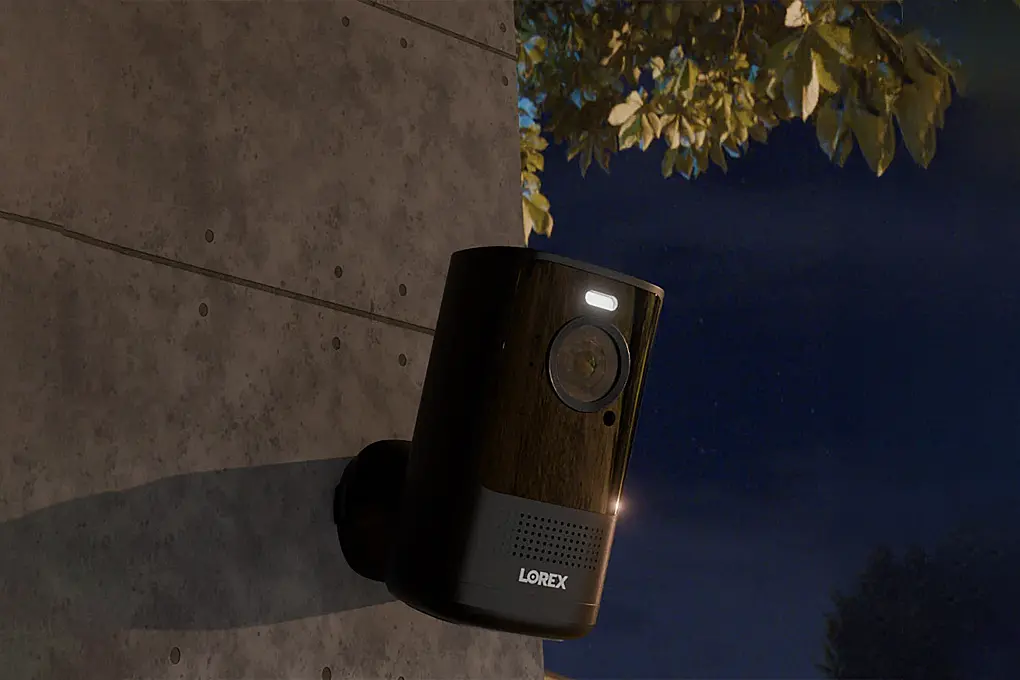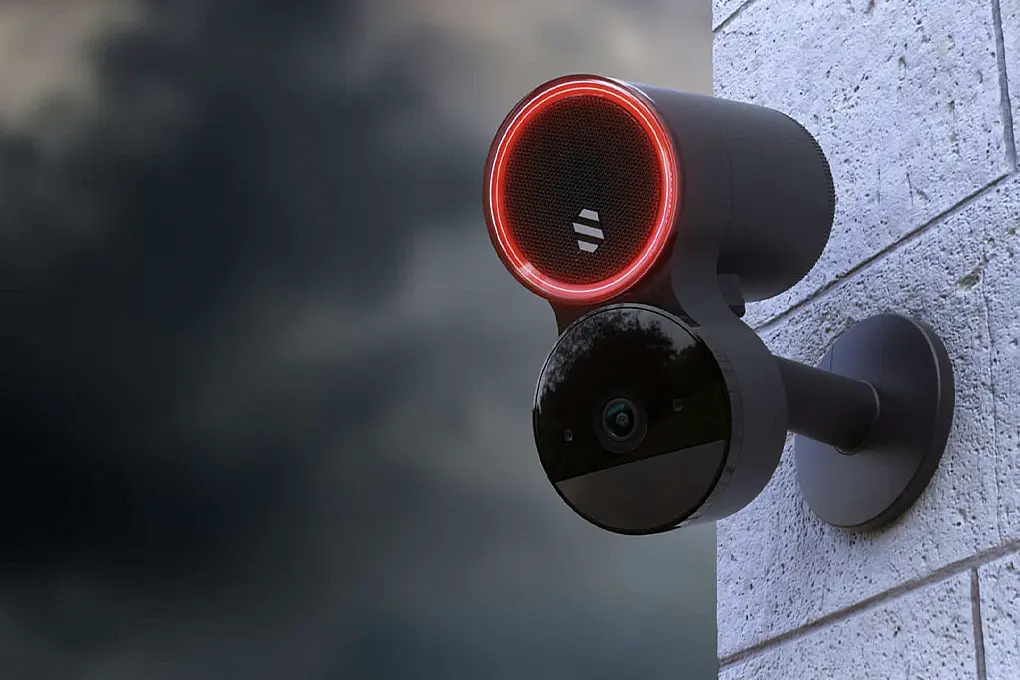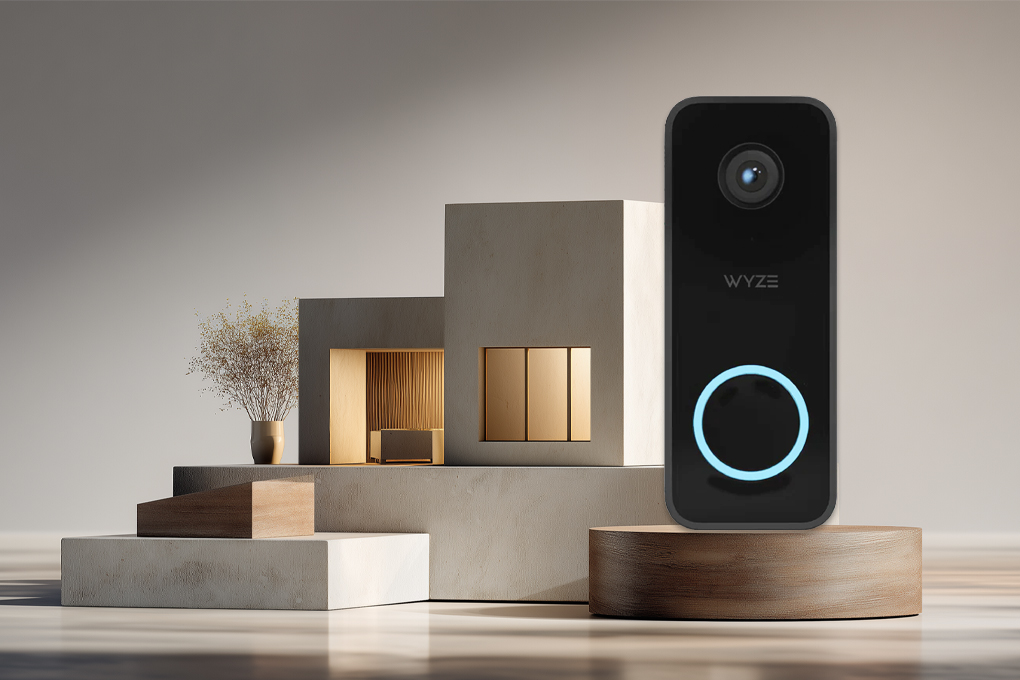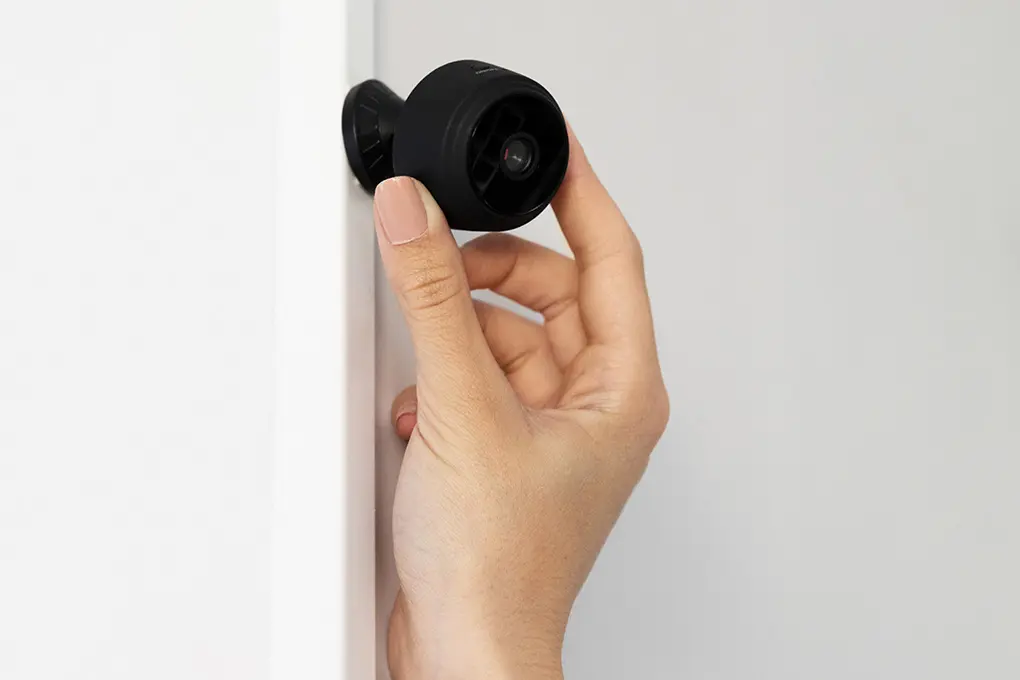Quick Answer: Lorex clearly outperforms Samsung in 2025. With 4K resolution, extended night vision, reliable storage, smart detection, and ongoing support, Lorex offers dependable protection. Samsung’s security cameras have been discontinued, with cloud services and app support shut down, leaving customers with unreliable and outdated equipment.
If you’re choosing between Lorex and Samsung, you’re deciding how to keep your home and family safe. The gap between these two brands has widened dramatically in 2025. One continues to roll out new technology and support its users, while the other has all but disappeared from the market.
Lorex remains a strong player, releasing new 4K cameras, delivering regular software updates, and offering responsive customer service six days a week.
Samsung, on the other hand, has effectively walked away from the security camera business. Its cloud services shut down years ago, multiple camera models stopped working on July 8, 2024, and direct sales have ended entirely. This comparison looks at where each brand stands today so you can make a smart, informed decision before spending your money.
Table of Contents
- Key Takeaways
- Current Brand Status and Availability
- Resolution and Video Quality Differences
- Field of View and Coverage
- Night Vision Performance Analysis
- Smart Detection and AI Features
- Storage Solutions and Ongoing Costs
- Mobile App Functionality
- Installation Complexity Comparison
- Smart Home Integration
- True Cost of Ownership
- Customer Support Comparison
- Security Vulnerabilities and Legal Issues
- Family-Specific Considerations
- Making the Right Choice
- Take Control of Your Home Security
- Frequently Asked Questions
- Sources
Key Takeaways
- Lorex continues to innovate with 4K resolution, smart detection, night vision up to 150 feet, and reliable customer support, while Samsung has abandoned its security camera business.
- Samsung discontinued SmartCloud in 2020, ended app support in 2024, and left users with nonfunctional devices and no recourse for service or replacement.
- Lorex cameras deliver sharper video at 30 fps, wider 108-180° fields of view, and better night coverage than Samsung’s aging 720p-1080p models.
- Smart detection accuracy reaches 95% on Lorex cameras, helping reduce false alerts, while Samsung triggers frequently on shadows and movement.
- Lorex systems offer 1TB-16TB of local DVR/NVR storage, with optional low-cost cloud backup, avoiding mandatory monthly fees.
- Samsung’s SmartThings integration is unreliable, while Lorex works with Alexa, Google Assistant, and a range of smart home platforms.
- Visit Batten to find vetted security camera systems and start building a reliable home security setup that protects your family for years to come.
Current Brand Status and Availability
The home security camera market changes quickly, but it’s rare for a major brand to completely walk away from its customers. Samsung has done exactly that, while Lorex has continued to invest in product development and customer support.
Samsung’s Exit from the Security Camera Market
After Hanwha acquired Samsung Techwin and merged it with Wisenet, the security camera lineup was reduced from dozens of models to only a few still available through third-party sellers. Direct purchases from Samsung or Wisenet are no longer possible, leaving many customers without reliable options for new hardware or replacement parts.
Lorex Maintains a Strong Market Presence
Lorex took a very different approach. In 2024, the company split its residential and commercial divisions to sharpen its focus on home security products. Recent releases include 4K dual-lens cameras with 180-degree coverage and lightbulb-style security cameras designed for quick installation. Lorex sells directly through its website, major retailers, and authorized dealers, which signals a healthy and stable business.
Customer Support Tells the Real Story
Samsung’s support infrastructure has collapsed. Wisenet ended U.S. customer support, Samsung now points users to outdated or missing resources, and warranty claims through third-party sellers are often denied.
One customer shared that six of their cameras stopped working overnight, and Samsung offered no repairs, replacements, or compensation.
Lorex, on the other hand, continues to provide regular software updates, maintains accessible support, and offers warranties through official sales channels, which has helped the company retain customer trust.
Resolution and Video Quality Differences
Video quality determines whether you can identify faces, read license plates, or provide useful evidence to law enforcement. Knowing the technical differences helps explain why modern security cameras vary so dramatically in price and performance.
Video Resolution
| Feature | Lorex | Samsung |
| Maximum Resolution | 4K (3840 x 2160) | 1080p (1920 x 1080) |
| Frame Rate | 30 fps at 4K | 15-20 fps at 1080p |
| Sensor Size | 8 megapixels | 2-3 megapixels |
| Field of View | 108-180 degrees | 72-105 degrees |
| Digital Zoom Clarity | Maintains detail at 4x zoom | Pixelated at 2x zoom |
| HDR Support | Yes on most models | Limited availability |
Lorex cameras typically deliver 4K resolution at 30 frames per second, producing 3840 x 2160 pixels of sharp detail. The Nocturnal series uses 8-megapixel sensors, which helps preserve clarity even when you zoom in on recorded footage. This high resolution provides clear identification of faces, license plates, and other fine details, which is especially useful for security monitoring.
Samsung’s resolution varies significantly by model and release year. The SDH series supports 1080p Full HD, but many SmartCam models are limited to 720p. Frame rates usually range from 15 to 20 fps at maximum resolution, which can result in noticeably choppy video during movement. The SmartCam N1 reaches 1080p, which was solid several years ago but no longer matches current expectations for home security.
Field of View and Coverage
Field of view plays a major role in determining how much area a camera can monitor. Lorex cameras typically offer viewing angles between 108 and 140 degrees, while their dual-lens model achieves 180 degrees through image stitching. This wider coverage helps reduce blind spots and often allows homeowners to secure large areas with fewer cameras.
Samsung cameras generally offer narrower viewing angles, averaging between 72 and 105 degrees depending on the model. This means more units are usually needed to achieve the same coverage that Lorex provides with fewer cameras. In practical terms, broader fields of view often translate to simpler installations and lower overall system costs.
Night Vision Performance Analysis
Criminal activity often peaks after dark, which makes night vision an essential part of any reliable security system. Lorex uses Color Night Vision technology that operates in two modes: full color when there’s enough ambient light and black-and-white infrared in complete darkness. The night vision range extends up to 150 feet for PTZ cameras and 90 to 130 feet for standard models, offering clear visibility across large areas.
Samsung relies on traditional IR cut filters that switch between day and night modes. Outdoor coverage typically reaches up to 82 feet, while indoor SmartCam models offer only 16 to 50 feet. No Samsung models provide color night vision or match the extended range offered by Lorex.
The difference is especially noticeable on larger properties. For example, a typical suburban home with a 100-foot driveway benefits from Lorex cameras placed on the house, which can cover the entire property line. Samsung cameras often leave dark spots where intruders can approach without being seen.
Smart Detection and AI Features
Accurate detection matters because false alerts waste time and can lead to alert fatigue, causing users to miss genuine threats. Lorex’s Smart Motion Detection Plus can distinguish between people, vehicles, animals, and packages with around 95% accuracy under ideal conditions. Users receive notifications that specify what was detected, which helps them decide how to respond.
Samsung’s intelligent features exist mostly on paper. The SmartCam N1 promoted facial recognition and abnormal sound detection, but with app support discontinued for most models, these functions are now inaccessible. Models that still connect only offer basic motion zone settings without advanced filtering.
In real-world tests, Lorex cameras correctly identified delivery drivers versus animals about nine times out of ten. Samsung cameras, when functioning, triggered on any movement, including shifting shadows and tree branches. This gap in accuracy means Lorex users deal with fewer false alarms and can react more quickly to actual security events.
Storage Solutions and Ongoing Costs
How you store footage impacts both security and budget. The differences between Lorex and Samsung storage options reveal fundamental differences in company philosophy and support.
Storage & Cost
| Storage Type | Lorex | Samsung |
| Local Storage Capacity | 1TB-16TB DVR/NVR | 32-128GB microSD |
| Cloud Storage Available | Yes (optional) | Discontinued 2020 |
| Monthly Cloud Cost | $2.99-$9.99 | Not available |
| Days of Recording (4K) | 30+ days continuous | 2-5 days max |
| Backup Options | Multiple HDDs + Cloud | None |
| Storage if Camera Stolen | DVR/NVR retained | Lost with camera |
Lorex systems use DVRs or NVRs equipped with 1TB to 16TB hard drives, which can store weeks or even months of continuous footage without any monthly fees. This setup follows professional security practices, where 24/7 recording ensures that nothing is missed, even if motion detection fails. For those who prefer cloud backup, Lorex offers optional storage plans starting at $2.99 per month per camera or $9.99 per month for up to 10 cameras with 30-day video retention.
Samsung’s Limited Storage Capabilities
Samsung discontinued its SmartCloud storage service in 2020, leaving users with only microSD cards that range from 32GB to 128GB, depending on the model. At 4K resolution, a 128GB card can fill up in just a few days. If a camera is stolen or damaged, any footage stored locally is lost since there’s no backup option. While Samsung once offered DVR systems with storage capacities similar to Lorex, ongoing support and replacement parts are no longer available.
Cost Considerations
When comparing costs, Lorex systems typically require a higher upfront investment but avoid recurring fees unless cloud storage is added.
Over time, this often leads to meaningful savings. Samsung’s lower initial pricing becomes less appealing when factoring in discontinued services and unsupported hardware. In practice, Lorex systems often pay for themselves within two years compared to subscription-based alternatives that require monthly payments to retain footage.
Mobile App Functionality
Remote monitoring is a core feature of modern security systems, and app reliability plays a major role in overall usability. Lorex offers several mobile apps, including Lorex App, Lorex Cloud, and Lorex Pro, each designed for different camera types and system configurations. While users occasionally report minor bugs, the core functions such as live viewing, playback, and push notifications remain consistent across platforms.
Samsung’s mobile apps tell a different story. The original SmartCam app stopped supporting many models in July 2024, cutting off remote access for a large number of users. The replacement, Wisenet SmartCam+, works only with newer devices and is incompatible with older SmartCam cameras. After forced updates, many users lost access entirely, rendering their cameras nonfunctional.
Customer feedback highlights this gap clearly. One Samsung user explained, “I have six cameras that worked fine. Samsung killed all of them with the last update.” By contrast, Lorex customers frequently praise the reliability of their apps, with one noting, “I use the phone app every day. For me, the phone app works very well.”
Installation Complexity Comparison
Installation plays a major role in how quickly and effectively your security system is up and running. Lorex wireless cameras typically take 15 to 30 minutes per unit to set up using the mobile app. Wired Lorex systems require more time and effort, often involving cable runs, mounting, and DVR configuration.
One user reported spending about five hours to install a four-camera wired system. Basic DIY skills are usually enough, though professional installation remains an option for those who prefer it.
Samsung’s installation process used to be simpler for individual cameras through QR code pairing. That advantage has disappeared with discontinued support and nonfunctional apps. Many users can no longer complete setup or reconnect cameras after power outages. Even if the hardware mounts correctly, lack of app connectivity leaves the system unusable.
Professional installation typically costs $100 to $300 per camera, regardless of the brand. The key difference is reliability after installation. Lorex systems continue to function as intended, while Samsung cameras often fail to connect, and even working units risk being disabled by future software updates.
Smart Home Integration
Smart home ecosystems rely on devices working together seamlessly, so integration plays a key role in how convenient your security system feels day to day. Lorex cameras integrate with Amazon Alexa and Google Assistant, allowing simple voice commands and live feeds on smart displays. For example, saying “Alexa, show me the front door” brings up the Lorex camera feed on an Echo Show, making real-time monitoring easy without opening an app.
Samsung’s Missed Opportunity
Given Samsung’s strong presence in the smart home space, its cameras should excel at integration. In practice, they fall short. Despite manufacturing SmartThings hubs, Galaxy phones, and smart TVs, Wisenet cameras offer only limited compatibility with SmartThings. Features that should work out of the box often require complicated workarounds, which frequently stop functioning after firmware or app updates.
Why Compatibility Matters
In homes that use multiple smart platforms, reliable integration makes everyday security tasks faster and simpler. Lorex performs well here, connecting with a wide range of ecosystems, including Apple, Google, and Amazon devices. Samsung cameras, by contrast, often struggle to function smoothly even within Samsung’s own ecosystem, and compatibility issues become worse with third-party devices.
True Cost of Ownership
The initial price tells only part of the story. Understanding total ownership costs over time reveals which investment actually protects your budget alongside your home.
5-Year Total Cost Analysis
| Cost Category | Lorex (4-Camera System) | Samsung (4-Camera System) |
| Initial Equipment | $800-1,200 | $400-600 |
| Installation | $400 DIY / $800 Pro | $400 DIY / $800 Pro |
| Monthly Fees (Required) | $0 | $0 (but non-functional) |
| Optional Cloud (5 years) | $600 ($10/month) | Not available |
| Replacement Due to Failure | $0 | $400-600 (new system) |
| Support Costs | Included | Not available |
| Total 5-Year Cost | $1,200-2,600 | $1,200-2,000+ |
| Functional at Year 5? | Yes | No |
Lorex cameras start around $50 for basic models, climbing to $200-400 for 4K units. Complete systems range from $400 for entry-level packages to $2,000+ for comprehensive 16-camera setups. No monthly fees apply unless you add cloud storage.
For comparison, check Batten’s curated security camera bundles for pre-selected quality options.
Samsung Wisenet cameras, when findable, cost $60-150 individually or $250-500 for basic multi-camera systems through third parties. Lower prices mean nothing when cameras become non-functional. Replacement becomes impossible as inventory disappears and support doesn’t exist.
Consider five-year ownership costs. A $1,000 Lorex system maintains full functionality with free local storage. Alternative brands charging $20 monthly for cloud storage add $1,200 over five years. Samsung cameras might cost $500 initially but become worthless when support ends – the most expensive option is buying twice.
Customer Support Comparison
Problems arise with any technology. Support quality determines whether issues get resolved or cameras become paperweights. Lorex provides customer service Monday through Saturday, 11 AM to 10 PM EST. Phone, email, and chat options exist with generally effective problem resolution despite occasional wait times.
Samsung’s support has completely collapsed. Wisenet terminated U.S. support, Samsung representatives direct customers to dead links, and warranty claims through retailers proved futile. Multiple customers report calling Samsung repeatedly without any resolution or even acknowledgment of the mass failure.
Better Business Bureau complaints reveal customer frustration. One owner of eight cameras wrote: “I filed a BBB complaint. I advise anyone who comes across this thread to do the same.” Another declared: “I will never buy another Samsung product as long as I live.”
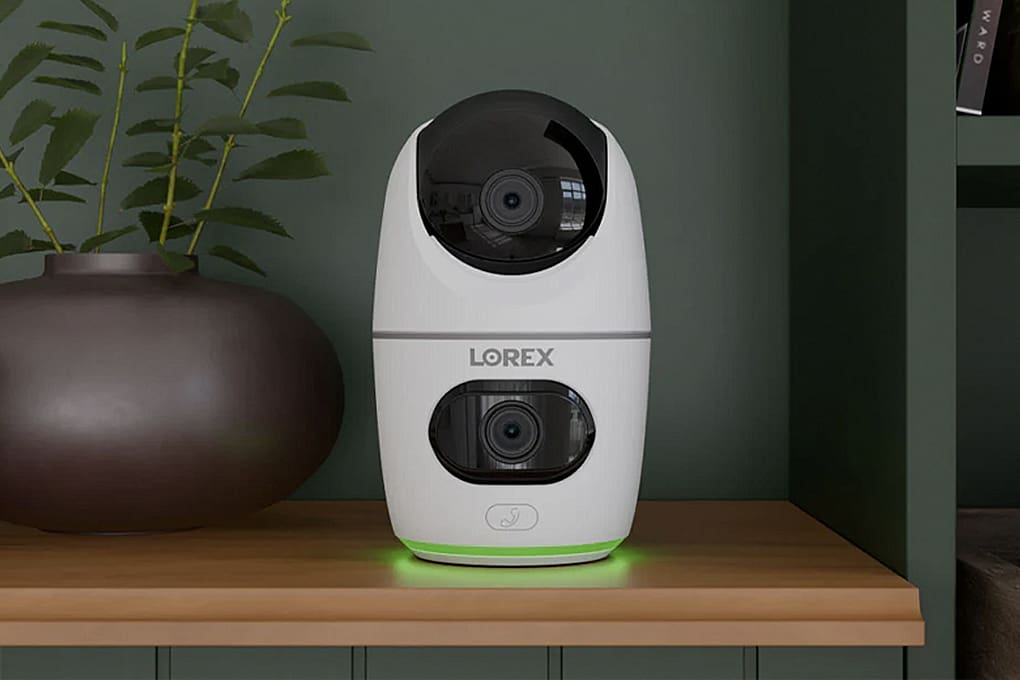
Security Vulnerabilities and Legal Issues
Security cameras with weak safeguards can unintentionally create new risks. In September 2025, the Nebraska attorney general filed a lawsuit against Lorex, claiming the company failed to adequately disclose potential vulnerabilities in certain cameras that contain Dahua components. Lorex was sold to Taiwan-based Skywatch in 2022, separating it from Dahua, but older models continue to raise concerns among regulators.
Samsung’s problems are different. Instead of facing security flaws, the company has abandoned its camera business entirely. After the July 2024 update, many Samsung cameras stopped functioning with no advance warning or compensation, leaving homes unprotected. Legal action appears likely as thousands of customers now own expensive equipment that no longer works.
This distinction is important. Lorex faces scrutiny but remains operational and continues to address security concerns through updates and support. Samsung customers, on the other hand, have been left without options. Security flaws can be patched; abandonment cannot be undone.
Family-Specific Considerations
Families often need security features that go beyond basic recording. Two-way audio allows parents to speak with children arriving home from school or check in on elderly relatives. Lorex includes two-way talk on most models and uses smart detection that can differentiate between family members and strangers, which improves both convenience and security.
Samsung once offered thoughtful family-focused features, but they no longer function. The BabyView monitor series included soothing sounds, temperature monitoring, and a physical privacy mode that turned cameras away when needed. These features became inaccessible after the mobile apps stopped working, leaving families without the tools they once relied on.
Pet owners also benefit from Lorex’s animal detection, which helps reduce false alerts while maintaining proper security coverage. Samsung cameras cannot distinguish between pets and potential intruders, leading to frequent false alarms. Many users ended up disabling motion detection entirely out of frustration.
Making the Right Choice
When comparing both brands, the evidence strongly favors Lorex despite higher upfront costs and recent legal challenges. Lorex provides 4K resolution, extended night vision, dependable smart detection, and ongoing support. Their systems work reliably today and are positioned to continue functioning in the years ahead.
Samsung cameras are no longer a practical option in 2025. The mass disconnections in July 2024, discontinued cloud storage, lack of customer support, and disappearing inventory make them a poor investment that often ends in frustration and wasted money.
For families on a budget, starting with a basic Lorex 1080p system and upgrading individual cameras over time offers immediate protection and a clear path for future improvements. Renters may prefer Lorex’s wireless options or consider flexible alternatives such as Arlo, which integrates well into smart home setups.
Current Samsung camera owners face a difficult reality. While some models still allow basic local recording, complete failure is likely over time. Planning replacements now is the best strategy. Prioritizing high-traffic or vulnerable areas first turns this forced upgrade into an opportunity to install modern systems with 4K resolution and AI detection that can protect families well into the future.
Take Control of Your Home Security
Lorex has steadily improved its security camera lineup through advanced 4K resolution, strong night vision, reliable smart detection, and continued customer support. Samsung, once a major player, has effectively abandoned its users, discontinuing cloud services, ending app support, and leaving many cameras nonfunctional after the 2024 update.
Across every category – video quality, storage, app performance, smart home integration, and long-term reliability – Lorex provides a stable, future-proof choice. Samsung, by contrast, represents a risky investment with no clear path forward. For homeowners who value dependable protection, Lorex stands out as the practical and sustainable option.
Your family deserves security systems that work reliably, not abandoned technology that fails without warning. Browse Batten Home Security’s expert-vetted surveillance solutions to find dependable cameras with genuine support and proven performance.
From comprehensive security bundles to individual cameras for specific vulnerabilities, we help you build protection that actually protects – backed by real companies that stand behind their products.
For those preparing for broader security challenges beyond cameras, explore our emergency preparation guides and physical security resources to create comprehensive home protection.
Frequently Asked Questions
Can I Use My Old Samsung Cameras With a New Lorex System?
Most Samsung cameras use proprietary connections incompatible with Lorex systems. Samsung’s analog cameras with BNC connectors might work with some Lorex DVRs, but digital IP cameras won’t connect due to different protocols. Since Samsung discontinued app support, replacing the entire system with compatible equipment from our security camera collection provides better long-term value.
Do Lorex Cameras Work Without Internet or Wi-Fi?
Yes, Lorex cameras record continuously to local DVR/NVR storage without any internet connection. The cameras connect via cables to the recorder, which stores footage on internal hard drives. Internet is only needed for remote viewing through apps or optional cloud backup. This makes Lorex ideal for rural properties or areas with unreliable internet.
What Happens to My Samsung Cameras After the App Stops Working?
Once the app loses support, Samsung cameras lose remote viewing, motion alerts, and most smart features. Some models might continue basic local recording to SD cards, but you cannot access footage remotely or receive notifications. Most users report complete loss of functionality, making replacement with modern alternatives necessary.
Are Lorex Cameras Compatible With ONVIF Standards for Third-Party Integration?
No, Lorex cameras don’t support ONVIF protocols, limiting integration with third-party NVRs or video management systems. They work exclusively within the Lorex ecosystem. For open-standard compatibility needs, consider professional consultation through Batten’s resources to identify suitable alternatives.
How Much Bandwidth Does 4K Streaming Require for Remote Viewing?
Streaming 4K footage requires 15-25 Mbps upload speed per camera for smooth remote viewing. Multiple cameras need proportionally more bandwidth. Local recording doesn’t require internet, but remote access demands robust upload speeds many home internet plans lack. Consider wired systems with local storage if your internet can’t support high-resolution streaming.
Can I Get Professional Monitoring for Lorex Cameras?
Lorex doesn’t offer professional monitoring services – they’re designed for self-monitoring only. The cameras send alerts to your phone, but you must verify threats and contact authorities yourself. For professionally monitored options, explore comprehensive security systems that include 24/7 monitoring centers.
Sources
- Courthouse News. 2025. Nebraska sues camera manufacturer with ties to China. Nebraska sues camera manufacturer with ties to China | Courthouse News Service.
- Samsung. 2024. Viewing software for SNH-V6410PN smartcam app no longer supported July 2024. Viewing software for SNH-V6410PN smartcam app no l… – Page 3 – Samsung Community – 2925583
- Security.org. 2025. Best 4K Home Security Cameras, Tested for Burglar & Porch Pirate Detection. Best 4K Home Security Cameras of 2025 | Security.org
